Early Bird Deadline
30 November 2025
Judging
Date
23 & 24 March 2026
Winners Announcement
22 April 2026
30 November 2025
23 & 24 March 2026
22 April 2026

There are over 350 grape varieties that Italy’s Ministry of Agriculture and Forestry – MIPAAF has granted authorized status. Here is the list of some of the popular ones.
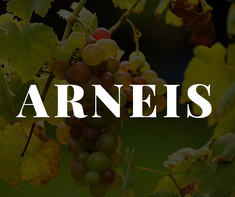 Arneis is a white Italian grape variety that is found primarily in the Piedmont region of Italy. The finest examples of Arneis wines are those from the Roero DOCG, located northwest of Alba in Piedmont. Additionally, the DOC wines of Langhe are noteworthy.
Arneis is a white Italian grape variety that is found primarily in the Piedmont region of Italy. The finest examples of Arneis wines are those from the Roero DOCG, located northwest of Alba in Piedmont. Additionally, the DOC wines of Langhe are noteworthy.
The name Arneis means “little rascal” in Piemontese. This nickname is a reference to the fact that Arneis can be very difficult to grow. Moreover, Arneis needs to be harvested in September in order to avoid over-ripening. The best Arneis wines are crisp and floral, filled with notes of pears, apricots and almonds. They are known for being aromatic and perfumed. With oak aging, these wines can achieve a much fuller body.
These Arneis wines have been produced in Piedmont for centuries. In fact, the earliest mention of Arneis dates back to the 15th century. Throughout this time period, Arneis has maintained a close relationship with Nebbiolo. For example, in the Barolo region, Arneis is used to soften the tannins and harshness of Nebbiolo. And in some vineyards, Arneis and Nebbiolo are planted in the same area. For that reason, Arneis is sometimes referred to as “Nebbiolo Bianco” and “Barolo Bianco.”
Outside of Piedmont, Arneis grapes can be found in the Italian wine region of Liguria and the island of Sardinia. In North America, grape growers in both Sonoma (California) and the Willamette Valley (Oregon) have had success with Arneis. These grapes can also be found in Australia and New Zealand.
In terms of food pairings, Arneis can be combined with spaghetti (especially with olive oil and garlic), calamari and Waldorf salad.
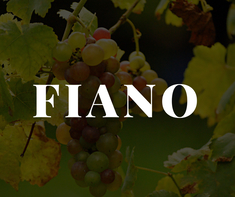 Fiano is an Italian white grape variety that is primarily found in the Campania region of southern Italy and the island of Sicily. Fiano is capable of creating strongly flavored wines with intense aromas. Within Italy, there is only one DOCG that is specifically focused on Fiano production: Fiano di Avellino, which is centered around the town of Avellino.
Fiano is an Italian white grape variety that is primarily found in the Campania region of southern Italy and the island of Sicily. Fiano is capable of creating strongly flavored wines with intense aromas. Within Italy, there is only one DOCG that is specifically focused on Fiano production: Fiano di Avellino, which is centered around the town of Avellino.
Fiano actually has a long history in Campania. Wine historians now believe that Fiano is the legendary Roman wine Apianum mentioned by Pliny the Elder. “Apiana” is the Latin word for “bees,” which references the bees that are attracted to the sugary pulp of Fiano grapes. It is not uncommon to see bees buzzing around in the primary Fiano grape growing region. For that reason, “Apianum” can appear on the wine labels of wines made within the Fiano di Avellino DOCG.
Long considered a classic grape of southern Italy, Fiano is now also gaining traction on the island of Sicily as a single varietal wine. During the 19th and 20th centuries, Fiano has been losing ground to both Trebbiano and Sangiovese as a popular grape. Outside of Italy, Fiano can be found in Australia (especially South Australia) and Argentina (especially La Rioja).
All wines made within the Fiano di Avellino DOCG must be at least 85% Fiano, with the remaining percentage comprised of Greco, Coda di Volpe and Trebbiano. These Fiano wines tend to be pale, straw-colored wines with strong aromas of spice and some floral notes. Fiano thrives in the volcanic soils of the Apennine Mountains. Some of the newest Fiano vineyards are on the site of a hazelnut plantation, so these Fiano grapes tend to have a slight hazelnut flavor.
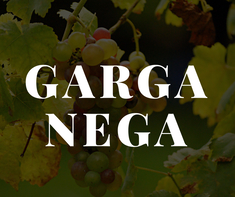 Garganega is an Italian white grape variety that is primarily found in the Veneto region, which is located in the far northeastern part of Italy. Garganega is now one of the six most popular white grape varieties in Italy. Within Sicily, Garganega is known as “Grecanico.”
Garganega is an Italian white grape variety that is primarily found in the Veneto region, which is located in the far northeastern part of Italy. Garganega is now one of the six most popular white grape varieties in Italy. Within Sicily, Garganega is known as “Grecanico.”
Garganega is primarily known for its role in the creation of Italy’s Soave wines, which experienced a huge spike in popularity amongst wine drinkers in the 1960’s and 1970’s. These Soave wines are crisp white wines with a neutral flavor, typically priced in a way that makes them very affordable and approachable for new wine drinkers.
Many wine drinkers assume that Soave is the grape variety used to make these wines; however, Soave is just a geographical appellation, such as Chianti. The traditional Soave blend includes at least 70% Garganega, combined with Trebbiano and Chardonnay, depending on the preferences of the winemaker. Top names within the Soave wine zone include Pieropan, Inama, Ca’Rugate and Anselmi.
The history of Garganega wines dates back to the middle Ages. What Italian grape growers have found is that they must continuously prune back vines to reduce yields. Doing so leads to improved quality and flavor. In addition to Soave, another popular Italian white wine blend is Gambellara. Garganega can also be used to make sweet dessert wines, such as Recioto di Soave.
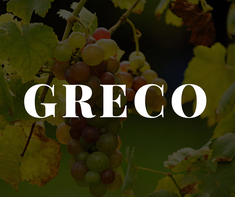 Greco is an ancient Italian white wine grape that is generally considered to be of Greek origin. Most wine historians now assume that Greek settlers brought Greco to southern Italy nearly 2,500 years ago. Greco is thought to be a key component of some of the cult wines of ancient Rome.
Greco is an ancient Italian white wine grape that is generally considered to be of Greek origin. Most wine historians now assume that Greek settlers brought Greco to southern Italy nearly 2,500 years ago. Greco is thought to be a key component of some of the cult wines of ancient Rome.
Today, Greco can be found most commonly in southern Italy, where it is a key grape in several wine regions, especially those in Campania and Calabria. In Campania, for example, Greco is used to make the DOCG wine Greco di Tufo; in Calabria, Greco is used to make the DOC wine Greco di Bianco. On the island of Capri, Greco blends with Biancolella and Falanghia to produce dry white wines.
Greco can be used to make very different styles of wine. For example, Greco di Bianco is a sweet dessert wine made in the passito style that requires drying out of the grapes. Most Greco wines, however, are fresh, clean and highly acidic. They tend to have a grapey profile and are best consumed when they are young.
According to DNA analysis, Greco is identical to another grape variety grown in Italy known as Asprinio. Somewhat confusingly, the name “Greco” is also used to describe Italian grapes that are thought to be of Greek origin. Thus, even Trebbiano is sometimes referred to as “Greco,” despite there being no relationship between the two.
There are actually two Greco varieties – Greco Bianco (white) and Greco Nero (black). While there is actually more Greco Nero under cultivation than Greco Bianco in southern Italy, the term “Greco” almost always refers to Greco Bianco. Outside of Italy, Greco can be found in South Australia.
Garganega wines tend to be light to medium-bodied, with notes of pear, white plum, almond, citrus or gentle spice. They pair well with seafood dishes, as well as pizza.
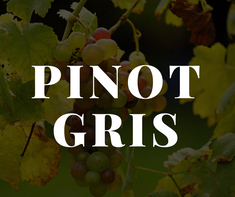 Pinot Gris (also popularly known as Pinot Grigio) is a white grape variety that is part of the Pinot family that includes Pinot Blanc and Pinot Noir. The berry skins of Pinot Gris tend to be rose-colored, and the resulting wines are often deep golden yellow in appearance.
Pinot Gris (also popularly known as Pinot Grigio) is a white grape variety that is part of the Pinot family that includes Pinot Blanc and Pinot Noir. The berry skins of Pinot Gris tend to be rose-colored, and the resulting wines are often deep golden yellow in appearance.
There are two main types of Pinot Gris wines. Within France (and especially Alsace), the wines are spicy and full-bodied. This is a result of the relatively cool climate and the volcanic soils. In addition, the autumns are dry without a lot of moisture, and that helps to impart a very powerful flavor to these wines. Within Italy, however, the Pinot Grigio wines are lighter-bodied and more acidic. In Italy, Pinot Grigio is harvested early to retain the light, refreshing acidity.
In the mid-2000s, Pinot Gris experienced resurgence worldwide, thanks in large part to the excellent new Pinot Gris wines being produced in New World wine nations. For example, Australia and New Zealand have emerged as major new wine producing centers for Pinot Gris, as have Washington State, Oregon and California within the United States. Chile, too, now has Pinot Gris producers within the Casablanca Valley. These New World expressions of Pinot Gris often include fruit-forward flavors suggesting tropical fruits such as melon or mango.
Within Europe, the most popular regions for Pinot Gris include Baden and Palatinate in Germany; Burgundy, the Loire Valley and Alsace in France; and Trentino in Italy.
Pinot Gris actually has a long history dating back to the medieval era. At that time, it was a personal favorite of Emperor Charles IV. The first great Pinot Gris wines appeared in France’s legendary Burgundy region.
Show your wines where it matters. Get your products tasted by top sommeliers, buyers and experts at the London Competitions — enter now.